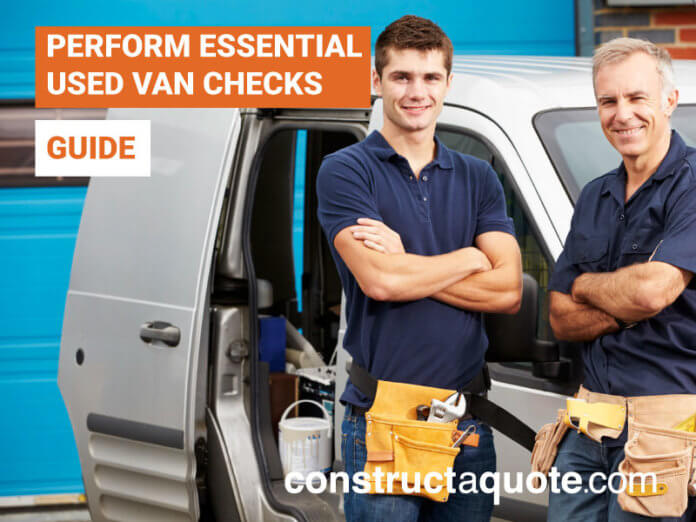by constructaquote - 17 December 2017


If you’re considering buying a used van, you need to make sure the one you’re buying is road-worthy, reflects the asking price and is also suitable to carry out the work you need is for. The car must be roadworthy and safe to drive. If it’s not, by law, the seller must explicitly tell you, and you must both agree it’s being bought for scrap.
Buying a vehicle that is unfit for use could put your business at risk as well as the driver of the van and others on the road.
Before paying for the vehicle, you should perform a series of van checks first to establish the health of the vehicle and whether it meets your requirements. It’s always a good idea to take a friend who’s clued up on vans, or better yet, a mechanic who really knows what to look for.
However, if you need to perform a van check on your own, here are some things to look out for…
Visual checks are pretty self-explanatory, and you should be able to spot most cosmetic issues fairly easily. Things like scratches to the paintwork are not a major concern unless you specifically want a vehicle that is in very good visual condition. Additionally, these are the main areas you need to give a once over…
Carrying out a test drive is the best way to establish if there are any major issues with the vehicle, however, always be careful and consider if the vehicle is a safety risk to drive first. When test driving the van, you’ll get a general feel of how healthy the vehicle is but the things you should assess are…
Even if the vehicle passes all of the essential visual checks and the test drive, you will still need to check the vital documents.
Ask for proof of the vehicles full-service history to establish how the van has been treated and maintained.
If you’re going to proceed with purchasing the vehicle, the current owner must provide you with the V5C registration certificate which will need to be updated with your details and sent to the DVLA.
Make sure the VIN number on the V5C certificate matches the one on the vehicle. This can be found on the windscreen of chassis.
Need more advice before buying a van? Check out our Guide To Buying A Commercial Van Here.
Have you got the right insurance for your van? Check out our van insurance policy here.

by Charlotte Houghton - 7 October 2020
by constructaquote - 6 October 2020
by Charlotte Houghton - 29 September 2020
by Charlotte Houghton - 24 September 2020